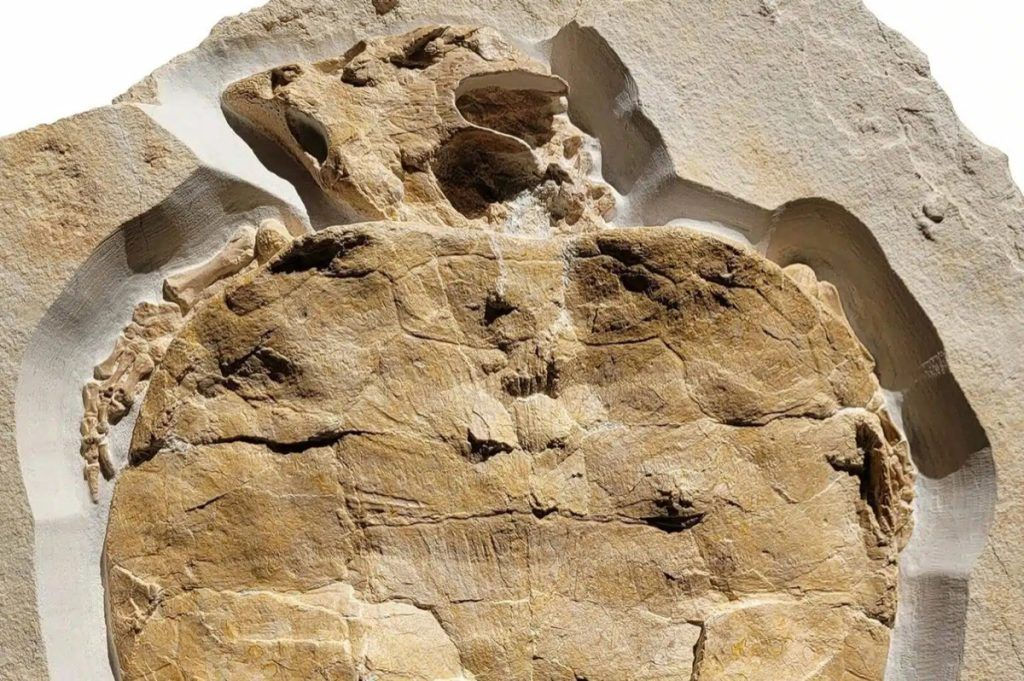By: Eva Luo
A recent find of a well preserved turtle tells us what life was like 150 million years ago.
Solnhofia Parsoni is a genus of extinct thalassochelydian turtle. “It’s the most complete and best preserved one so far,” said Márton Rabi, a paleontologist at the University of Tübingen and another author of the study. Solnhofia parsoni was found in Solnhofen limestone, in a quarry, south of the city Nuremberg. During the Jurassic period, the turtle lived in Germany, near tropical archipelagos, with shallow water and spongy coral reefs.
The shorter limbs of the fossil suggest that S. Parsoni lived near the coast. The fossil was about a foot long, with a skull 4 inches long. S. parsoni belonged to a group of turtles called side necked turtles, which couldn’t fully retract their heads, but would tuck them under the sides of the shells. The fossil has a triangular beak, suggesting that they would have eaten shelled crustaceans, but are not necessarily limited to that diet.
S.parsoni’s fossil lacks the stiffened specialized pads found in turtles of the Cretaceous period, the last period of the Mesozoic Era, and the salt removal glands of modern turtles. Coastal claw marine turtles were quite successful throughout the remainder of the Mesozoic Era. Diamond terrapins are the closest related living species of turtles.
While Solnhofia went extinct at the end of the Jurassic period, the family lingered through the extinction of the dinosaurs, into the Eocene Epoch, and finally disappeared. There are also turtles today who thrive in similar conditions. Bottom-feeding coastal turtles have evolved as a response to sea levels rising. The results may lead shallow marine ecosystems to boom, just like they did 150 million years ago.
However, not all animals that died during that time became fossils. “The very good preservation of the fossils in the layers of limestone can be explained by the environmental conditions at the time,” said co-author and University of Tübingen paleoecologist Andreas Matzke. The fossil was preserved when the animal died in the lagoon by the salty and low-oxygen bodies of water. This also made it difficult, if not impossible, for scavengers to pick apart the remains. The sediment around it became limestone, and the area became a quarry, in which the fossil was preserved perfectly.
The complete fossil is both a blessing and a curse. The fossil shows us what the turtle looked like, but a broken fossil allows anatomist to piece it together and notice details that might have been missed if just looking at a whole fossil. There are other turtle species’ fossils in Germany, more than the species that exist now. The area where this fossil was found has many other notable discoveries, including the earliest birds, archeopteryx, pterosaurs, and other marine animals. This place is also a good place to find mesozoic fossils.
Sources:
https://www.popsci.com/environment/germany-turtle-evolution-fossil/











